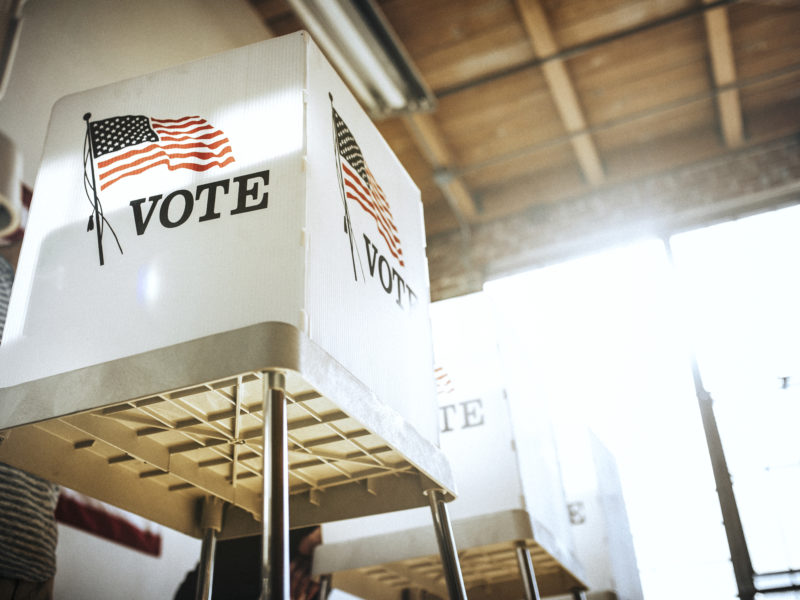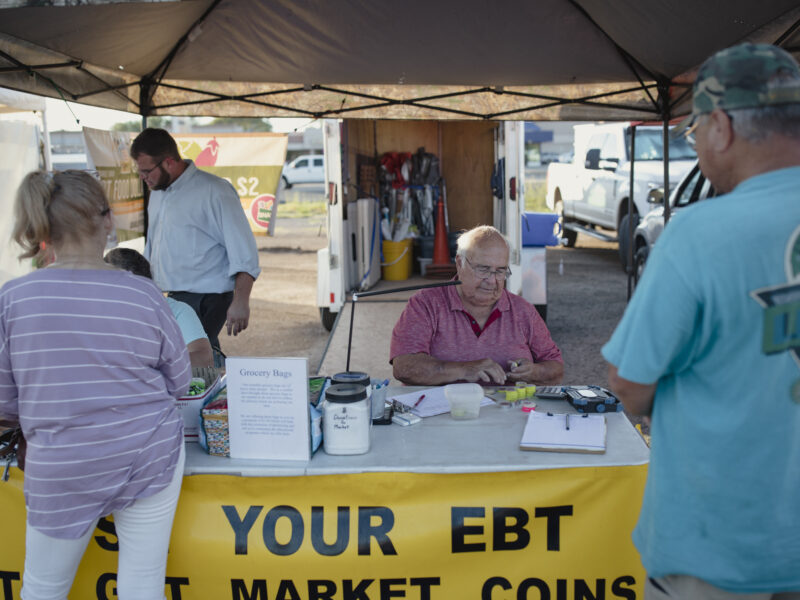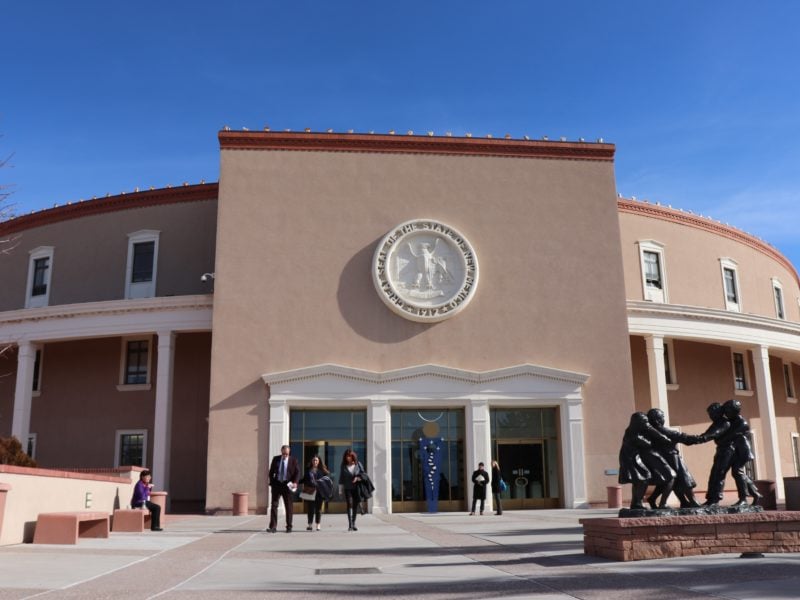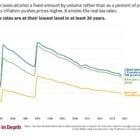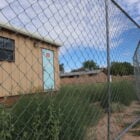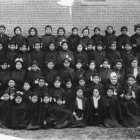This is New Mexico In Depth’s mid-week newsletter. We think it’s crucial to stay in touch and tell you what’s on our minds every week. Please let us know what’s on your mind as well. Or, got tips? What do we need to know?
Alcohol
Alcohol taxes across country are “very, very low”
|
Lawmakers shouldn’t read too much into the fact that New Mexico has some of the highest alcohol taxes in the country, a national expert told them today. Because “alcohol taxes across the country are very, very low.”And Richard Auxier, Senior Policy Associate, Urban-Brookings Tax Policy Center, gave lawmakers at the Legislature’s Revenue Stabilization & Tax Policy Committee hearing a clear answer to questions about whether raising taxes helps improve public health. Yes, he said, research shows that raising taxes reduces consumption and improves health. In the state that leads the country in alcohol deaths, that’s important. But when you get into the weeds of tax policy, everything becomes complicated. Lawmakers should start with understanding their ultimate goal, Auxier said. Is it to eliminate or drastically reduce consumption of alcohol? If so, it might make sense to increase taxes significantly. Or is it to improve public health while not making drinking alcohol so expensive that it becomes out of reach?
2022 Election
Big donors giving most of the cash for governor’s race
|
New Mexico lawmakers in 2019 doubled campaign contribution limits for those seeking seats in the Legislature or running for governor, arguing they needed more money to compete against a deluge of outside spending.
Now, in the first gubernatorial election since 2019, those higher limits appear to have paid off for incumbent governor Michelle Lujan Grisham, a Democrat, and her Republican challenger, Mark Ronchetti.
They’ve both already raised more than candidates raised in 2014 and 2018 during the same time period under the previous, lower contribution limits. Lujan Grisham raised by the first week of September as much as she did for the entire 2018 election.
But there’s another difference too, one that if it was foreseen wasn’t mentioned when lawmakers in years past debated increasing the limits: the majority of the cash used by Lujan Grisham and Ronchetti to run for office this year comes, so far, from a small set of well-heeled groups of individuals and businesses, unlike the previous two gubernatorial elections.
Campaign finance reports reveal multiple instances of tens of thousands of dollars coming from groups of people related through business or family connections, such as spouses, children, and parents.
The higher limits mean such groups can collectively give a much greater amount than before, and in turn garner the greater access and influence that potentially follows.
It’s unclear if one person acts as a “bundler” of such donations, because New Mexico doesn’t require people to disclose the fundraising they do among friends, family or colleagues to support particular candidates.
But groups of related businesses or families and the amounts they’ve given can be identified by examining information reported by candidates, particularly the physical or mailing addresses of donors.
Sixty percent of around $10 million raised by Lujan Grisham through the first week in September has come from donors at just 357 of the more than 13,000 donor addresses provided in her reports.
And 53% of the almost $6.5 million Ronchetti has raised comes from donors at just 206 of the 9,112 addresses in his reports.
From each address in those small groups, the candidates gathered at least $10,000. In many cases there is one donor at the address giving the maximum of $20,800 (half for the primary, half for the general election), but there are many instances in which the total given by multiple people or businesses sharing an address is double that individual legal limit or much higher. The giving reported so far spans the entire primary election cycle, which began Jan. 1, 2021, plus general election donations through early September.
Indigenous Affairs
Albuquerque bought site of brutal 2014 murders years ago, spurred by talk of a memorial. But the current plan is for nonprofit office space.
|
A fenced-off lot near the intersection of Central Avenue and 60th Street, empty except for a portable trailer, a large “no trespassing” sign, overgrown weeds and a pile of debris, marks the site of two brutal murders.
Kee Thompson and Allison Gorman, members of the Navajo Nation experiencing homelessness, were sleeping there in July 2014 when three Albuquerque teenagers killed them.
In the days that followed, community members created memorials at the lot, the Albuquerque Journal reported, leaving stuffed animals, candles and a handwritten sign reading: “Let us pray for our homeless people. Keep them safe from evil” and City Councilors Klarissa Peña and Ken Sanchez suggested constructing a public memorial at the site. Thompson’s sister, Stephanie Plummer, hoped to see that proposal become a reality. But eight years later, the temporary tributes community members built are long gone and despite the city purchasing the property in 2019, there is no memorial. Current plans are for a nonprofit organization to use the site as office space.
Peña made a very public push for a memorial at the site in 2016.
We all need to learn more about boarding schools and their legacy
|
This week the U.S. Interior Department released a 100-page report on the lasting consequences of the federal Indian boarding school system. You might recall last June Interior Secretary Deb Haaland, an enrolled member of the Laguna Pueblo, announced the federal agency would investigate the extent of the loss of human life and legacy of the federal Indian boarding school system, a chapter of U.S. history many Americans know little to nothing about.
This week’s report is the first of possibly many, and it deserves to be read by as many Americans as possible.
Here are some of the investigation’s top-level findings:
Beginning in the late 1800s, the federal government took Indian children from their families in an effort to strip them of their cultures and language.Between 1819 and 1969, the U.S. operated or supported 408 boarding schools across 37 states (or then-territories), including 21 schools in Alaska and 7 schools in Hawaii. Of those 37 states, New Mexico had the third-greatest concentration of facilities, with 43, trailing only Oklahoma and Arizona. The schools “deployed systematic militarized and identity-alteration methodologies to attempt to assimilate American Indian, Alaska Native, and Native Hawaiian children through education, including but not limited to the following: (1) renaming Indian children from Indian to English names; (2) cutting hair of Indian children; (3) discouraging or preventing the use of American Indian, Alaska Native, and Native Hawaiian languages, religions, and cultural practices; and (4) organizing Indian and Native Hawaiian children into units to perform military drills.The Federal Indian boarding school system focused on manual labor and vocational skills that left American Indian, Alaska Native, and Native Hawaiian graduates with employment options often irrelevant to the industrial U.S. economy, further disrupting Tribal economies.
Boarding schools in New Mexico got an early start.Two years after the first boarding school, the Carlisle Indian School in Pennsylvania, opened in 1879, the Presbyterian Church opened the Albuquerque Indian School (AIS) for Navajo, Pueblo and Apache students. Later, the school transferred to federal control.The Albuquerque Indian School merits several mentions in this week’s report, including five photos as I counted them of young Indigenous girls and boys in class, and of the building itself.
Department of the Interior, Bureau of Indian Affairs, Albuquerque Indian School, 1947-ca. 1964 (most recent
creator). (ca.
Critical race theory is a GOP bogeyman
|
Last weekend, Derek Matthews, the founder of the Gathering of Nations Pow Wow, asked GOP state lawmaker and GOP gubernatorial hopeful Rebecca Dow to pull a campaign commercial that talked about “critical race theory. Standing on a stage with Dow in front of thousands of Native people who had flocked to the Albuquerque event from all over North America and beyond after a two-year hiatus due to the pandemic, Matthews’s request hushed the crowd except for a smattering of clapping and whistling. Dow ignored Matthews and welcomed the Gathering of Nations attendees without responding to his request. It was an awkward moment. I want to join Matthews in asking Dow to pull the commercial.
New Mexico in Depth wins awards in regional journalism contest
|
New Mexico In Depth has won six awards, including two first place prizes, competing against medium-sized newsrooms across New Mexico, Colorado, Wyoming and Utah. The honors, announced this weekend in Denver, were awarded in the annual Top of the Rockies contest administered by the Colorado chapter of the Society of Professional Journalists. Elizabeth Miller took 1st place in the agriculture and environment news for a package of stories that highlighted water finally making its way to parts of the Navajo Nation, where 30% to 40% of Navajo people still are without running water because of a century of federal indifference. But the century-late federal aid doesn’t include money to connect homes and small communities to a massive pipeline project. She also trained her eye on the city of Gallup and its near-crisis in water availability just as a new federal project that promises help could be held up for four additional years due to federal decision making.
The Redistricting Fight Isn’t Over
|
Thursday night, at the end of an interactive program on gerrymandering put on by the Keshet Arts and Justice Youth Leadership Council, the facilitator asked everyone in the audience (OK, only about a dozen of us) to summarize the experience in one word. “Frustrating,” said one older woman. “Exciting,” said one young woman. “Impressed,” I said. I was impressed by the way Council Co-chairs Juliana Gorena and Emani Brooks, both 19, used clips from the documentary Slay the Dragon to explain the history and impact of gerrymandering better than almost anyone I’ve seen try.
Trump ally Couy Griffin pushes election audit in Otero County. Not all Republicans like it.
|
Otero County is the latest local front in a war that is dividing Republicans over the 2020 election. The County Commission in southeastern New Mexico has paid for a $50,000 study they call an audit of the county’s election results, provoking headlines after voters complained that volunteers who are going door-to-door quizzing them are asking them who they cast ballots for — a charge one of the organizers has denied. While the county commission has authorized paying for the audit, it’s not an official audit like the ones completed after each election by the Otero County Clerk, the Office of the Secretary of State or an independent firm contracted by the state agency. Leading the effort is a group called New Mexico Audit Force and an ally is Otero County’s most famous commissioner — Republican Couy Griffin, the Cowboys for Trump leader awaiting trial on federal criminal charges of entering and disorderly conduct in a restricted building related to the storming of the U.S. Capitol on Jan. 6, 2021.
A win for New Mexico’s vulnerable population
|
New Mexico lawmakers made consequential changes for the state’s most vulnerable people during the short 30-day legislative session this year, made possible by a tidal wave of cash. Top of the list of consequential bills is the big boost in teacher pay. Lawmakers bumped salary minimums for Level 1, 2, and 3 teachers to $50,000, $60,000, and $70,000, respectively, a major goal of Gov. Michelle Lujan Grisham and legislators who publicly declared their intention to make New Mexico’s teachers the best paid in the region. Compared to states like Texas, Utah, Arizona, Oklahoma and Colorado, they’re about middling right now.
The hope is the increases will sweeten the allure of teaching. Vacancies among the state’s teaching ranks are high and growing.
economy
Survey: Indian Country and Jobs
|
What do you consider the job of the future? What is your dream job? Are you satisfied with your quality of life?
We’re working on a project on economic issues in tribal communities and we want to know more from you. News organizations joining New Mexico In Depth in this collaboration are Indian Country Today, Buffalo’s Fire, Investigate West, KOSU, Mvskoke Media, Osage News, Rawhide Press, Underscore and Wisconsin Watch. Please use this form to provide us with details about what is happening in your community.
